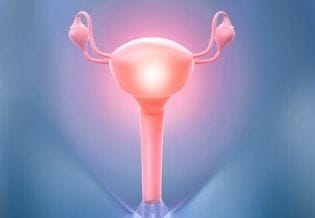Aims & Scope
Journal of Women's Reproductive Health (JWRH) publishes original research on the biological mechanisms underlying female reproduction, from gamete formation through embryonic development, with emphasis on reproductive physiology, endocrinology, and molecular biology.
Research Scope
Reproductive Physiology & Endocrinology
- Ovarian function and folliculogenesis
- Hormonal regulation of reproductive cycles
- Endometrial biology and receptivity
- Hypothalamic-pituitary-ovarian axis
- Steroid hormone biosynthesis and signaling
- Reproductive aging mechanisms
"Molecular mechanisms of estrogen receptor signaling in endometrial stromal cells during the window of implantation"
Gamete Biology & Fertilization
- Oocyte maturation and quality
- Sperm-oocyte interaction mechanisms
- Meiotic regulation and chromosome segregation
- Mitochondrial function in gametes
- Zona pellucida biology
- Fertilization signaling pathways
"Age-related changes in oocyte mitochondrial DNA copy number and oxidative stress markers"
Embryo Development & Implantation
- Preimplantation embryo development
- Blastocyst formation and quality
- Embryo-endometrial crosstalk
- Implantation window biomarkers
- Trophoblast differentiation
- Early placental development
"Gene expression profiling of human blastocysts to identify developmental competence markers"
Fertility Biomarkers & Assessment
- Ovarian reserve markers (AMH, FSH)
- Endocrine biomarkers of fertility
- Molecular predictors of reproductive potential
- Non-invasive fertility assessment methods
- Metabolomic profiling of reproductive tissues
- Genetic markers of reproductive function
"Validation of novel serum microRNA panels as predictors of ovarian response in reproductive-age women"
Reproductive Genetics
Genetic regulation of reproductive processes, chromosomal abnormalities in gametes, epigenetic modifications affecting fertility
Reproductive Immunology
Immune tolerance mechanisms in reproduction, inflammatory pathways affecting fertility, maternal-fetal immune interactions
Reproductive Metabolism
Metabolic regulation of reproductive function, energy metabolism in gametes and embryos, nutritional effects on fertility
Reproductive Toxicology
Environmental factors affecting reproductive biology, endocrine disruptors, oxidative stress in reproductive tissues
Reproductive Technology Methods
Novel techniques for gamete/embryo assessment, culture system optimization, cryopreservation biology, time-lapse imaging analysis
Comparative Reproductive Biology
Animal models of human reproduction, evolutionary perspectives on reproductive mechanisms, cross-species fertility studies
Single-Cell Omics in Reproduction
Single-cell RNA sequencing of reproductive tissues, spatial transcriptomics of ovarian/endometrial microenvironments
Artificial Intelligence in Reproductive Biology
Machine learning for embryo selection, AI-based prediction of reproductive outcomes, computational modeling of reproductive processes
Stem Cell Biology in Reproduction
Germline stem cells, in vitro gametogenesis, organoid models of reproductive tissues
Article Types & Priorities
Fast-Track Review
Standard Review
By Invitation Only
Note: Case reports are not considered regardless of novelty. Clinical case series without mechanistic investigation are out of scope.
Editorial Standards & Requirements
Reporting Guidelines
Adherence to discipline-specific standards required
Open Data Policy
Raw data deposition in public repositories encouraged
Ethics Approval
IRB/IACUC approval required for human/animal studies
Preprint Policy
Preprint posting permitted; disclose in cover letter
- ARRIVE (animal research)
- STROBE (observational studies)
- PRISMA (systematic reviews)
- CONSORT (clinical trials)
- MIQE (qPCR experiments)
- MIAME (microarray data)


